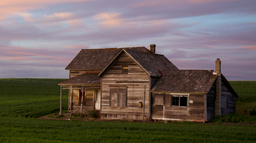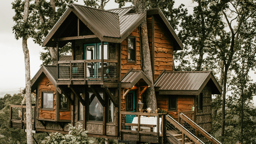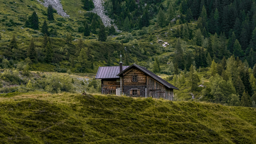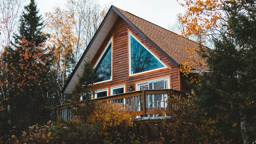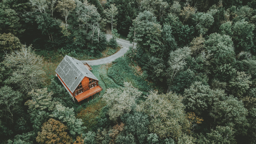Regular maintenance is essential for your cabin septic system. Some do’s and don’ts:
DO
• Have your tank inspected and emptied regularly. Experts recommend pumping a septic tank every 1 or 2 years, depending on size and usage.
• Limit kitchen wastes. Grease and fat from food hinder the septic process by coating drain pipes, interfering with bacterial breakdown in the tank and clogging the loose-fill material in the septic system drain field.
• Limit water inflow. Excess water speeds up flow through the septic system. The natural bacteria can’t do its job, allowing too many solids to pass into the drain field. So, limit your showers to 10 minutes, consider switching to water-conserving toilets, and conserve dishwasher/washing machine use.
DON’T
• Use chemicals. Harsh chemicals and antibacterial agents kill the bacteria your system depends on, so keep these chemicals out of your toilets and house drains: drain cleaner, paint and paint thinner, chemical cleaners, chlorine (including toilet bowl cleaners), and antibacterial liquid soaps.
• Ever use additives. Biological additives designed to stimulate bacterial growth often harm more than help.
DO
• Have your tank inspected and emptied regularly. Experts recommend pumping a septic tank every 1 or 2 years, depending on size and usage.
• Limit kitchen wastes. Grease and fat from food hinder the septic process by coating drain pipes, interfering with bacterial breakdown in the tank and clogging the loose-fill material in the septic system drain field.
• Limit water inflow. Excess water speeds up flow through the septic system. The natural bacteria can’t do its job, allowing too many solids to pass into the drain field. So, limit your showers to 10 minutes, consider switching to water-conserving toilets, and conserve dishwasher/washing machine use.
DON’T
• Use chemicals. Harsh chemicals and antibacterial agents kill the bacteria your system depends on, so keep these chemicals out of your toilets and house drains: drain cleaner, paint and paint thinner, chemical cleaners, chlorine (including toilet bowl cleaners), and antibacterial liquid soaps.
• Ever use additives. Biological additives designed to stimulate bacterial growth often harm more than help.
Landscaping tips
Mound septic systems can be a lot like sumo wrestlers: They’re big, unnaturally round, and let’s face it, visually unappealing.
But if you follow a few simple landscaping tips, you can transform that unsightly lump into a natural part of your cabin’s yard – without compromising the mound’s functionality.
- Choose drought-tolerant, herbaceous (non-woody) species to plant on the mound, such as prairie wildflowers and grasses. These plants have shallow roots and won’t require irrigation, which is a no-no.
- Never plant woody shrubs or trees on the mound. These types of plants have deep root systems, which can damage the internal piping and the filtering ability of the mound sand.
- Most woody plants can be used to form a decorative buffer along the edge of the mound, as long as you observe a 15–20-foot buffer. But, avoid water-seeking trees like maple, poplar, and willow, which can send out
root feelers into the mound and damage it.
- In cooler climes, consider planting perennial decorative grasses that require minimal mowing. In the fall, the taller grasses will catch snow and insulate the mound, helping to prevent freezing.
- This probably goes without saying, but avoid planting edible plants and berries on the mound. Your mound is saturated with clarified septic water, roots suck that water up into the plant, and that water is then distributed into any berries or vegetables. Enough said about that!
Mound septic systems can be a lot like sumo wrestlers: They’re big, unnaturally round, and let’s face it, visually unappealing.
But if you follow a few simple landscaping tips, you can transform that unsightly lump into a natural part of your cabin’s yard – without compromising the mound’s functionality.
- Choose drought-tolerant, herbaceous (non-woody) species to plant on the mound, such as prairie wildflowers and grasses. These plants have shallow roots and won’t require irrigation, which is a no-no.
- Never plant woody shrubs or trees on the mound. These types of plants have deep root systems, which can damage the internal piping and the filtering ability of the mound sand.
- Most woody plants can be used to form a decorative buffer along the edge of the mound, as long as you observe a 15–20-foot buffer. But, avoid water-seeking trees like maple, poplar, and willow, which can send out
root feelers into the mound and damage it.
- In cooler climes, consider planting perennial decorative grasses that require minimal mowing. In the fall, the taller grasses will catch snow and insulate the mound, helping to prevent freezing.
- This probably goes without saying, but avoid planting edible plants and berries on the mound. Your mound is saturated with clarified septic water, roots suck that water up into the plant, and that water is then distributed into any berries or vegetables. Enough said about that!







